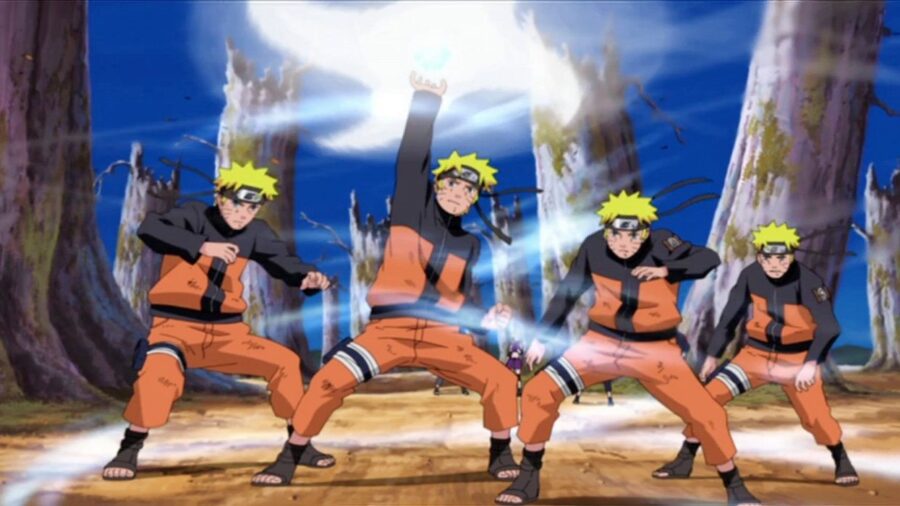Naruto: Jutsu Ninja Techniques Explained

Next to the insanely popular One Piece and the ongoing Bleach—which finally received a Thousand-Year Blood War adaptation—Naruto is also a part of The Big Three. Of course, each of these has its own Power System, with Luffy attaining new Gears, Ichigo finally breaking the boundaries between Shinigami, Quincy, Full-Bringers, and Hollows, and Naruto… Well, Naruto‘s power system is based on Justu, which is precisely the main topic of today’s discussion.
Jutsu refers to the mystical techniques and abilities used by ninjas to perform various actions and manipulate chakra, the energy source within their bodies. As such, Jutsu, which can be translated as method, technique, spell, skill, or trick, are actually central to the overall story and combat in the Naruto universe.
Jutsu refers to the mystical techniques and abilities used by ninjas to perform various actions and manipulate chakra, the energy source within their bodies.
However, in Naruto, the Jutsu techniques don’t rely on Ninjutsu alone—which is actually a collection of fundamental survivalist techniques developed by real-life ninjas of feudal Japan.
There Are Three Jutsu Types
Instead, the Jutsu techniques are actually broadly categorized into three types and several different ranks. The first type is Taijutsu, or hand-to-hand combat techniques, which actually don’t involve any chakra manipulation but instead rely solely on the ninja’s physical abilities, such as strength, speed, and agility. Several characters within the Naruto universe, such as Rock Lee and Might Guy, excel in taijutsu techniques.
But one might argue that martial arts don’t rely on physical abilities alone, and they’re right. Martial arts are primarily based on deception, and this is where genjutsu comes in. The combat application of Genjutsu is based on the manipulation of your target’s chakra, which allows the users to create illusions that affect the opponent’s senses.
Skilled genjutsu users in the Naruto universe, such as Itachi Uchiha, can manipulate the perceptions of others, causing them to see, hear, or feel things that aren’t real, thus allowing them to immobilize their targets easily.
Ninjutsu techniques are the ones that involve chakra manipulation in order to perform a wide range of combat techniques and basically enhance the previous two types. For example, the ninja’s taijutsu techniques can be enhanced with elemental attacks, such as fireballs, earth manipulation, and water torrents, all while simultaneously increasing the effectiveness of their genjutsu.
Additionally, Ninjutsu also involves non-elemental techniques, like transformations and illusions. A good example is Naruto’s signature Rasengan technique.
Ranking Jutsu
Of course, just like in real-world martial arts, the various types of Jutsu have different techniques, which are further categorized by rank, denoting their complexity, power, and the level of skill required to perform them.
For example, E-rank techniques are suitable for novice ninjas, while the S-rank belongs to the most powerful, complex, and often forbidden techniques, as using or misusing these might have catastrophic consequences—some of which might actually alter the reality within the Naruto narrative.
It’s important to note that not all S-rank techniques are forbidden. However, those that are forbidden are often referred to as Kinjutsu. These often imply severe consequences, such as large-scale chaos or potential harm to the user.
We never got to see Naruto use any of these techniques, as he generally avoids them, but if the Hogake of Hidden Leaf Village ever sets out to achieve world domination, Kinjutsu would be perfect for such endeavors.

Some examples of Kinjutsu include Edo Tensei, a Jutsu that allows the user to resurrect the dead; Izanami, which can manipulate time and reality; and Hachimon Tonkou, or Eight Gates, a dark taijutsu technique that greatly alters ninja’s physical abilities, potentially resulting with death due to overexertion.
But, as stated above, Naruto’s approach to becoming a responsible and respectable leader, and his overall determination and strong sense of justice, basically conflict with using such techniques, so he usually finds alternative solutions to challenging fights.
Who knows, now that One Piece proved that live-action anime adaptations can be successful if done correctly and at slow-burn pace, Netflix might take their chance and make a Naruto live-action (a proper one), or maybe Bleach and Dragon Ball—please be careful with the latter Netflix, our hearts can’t endure any more disappointments.












